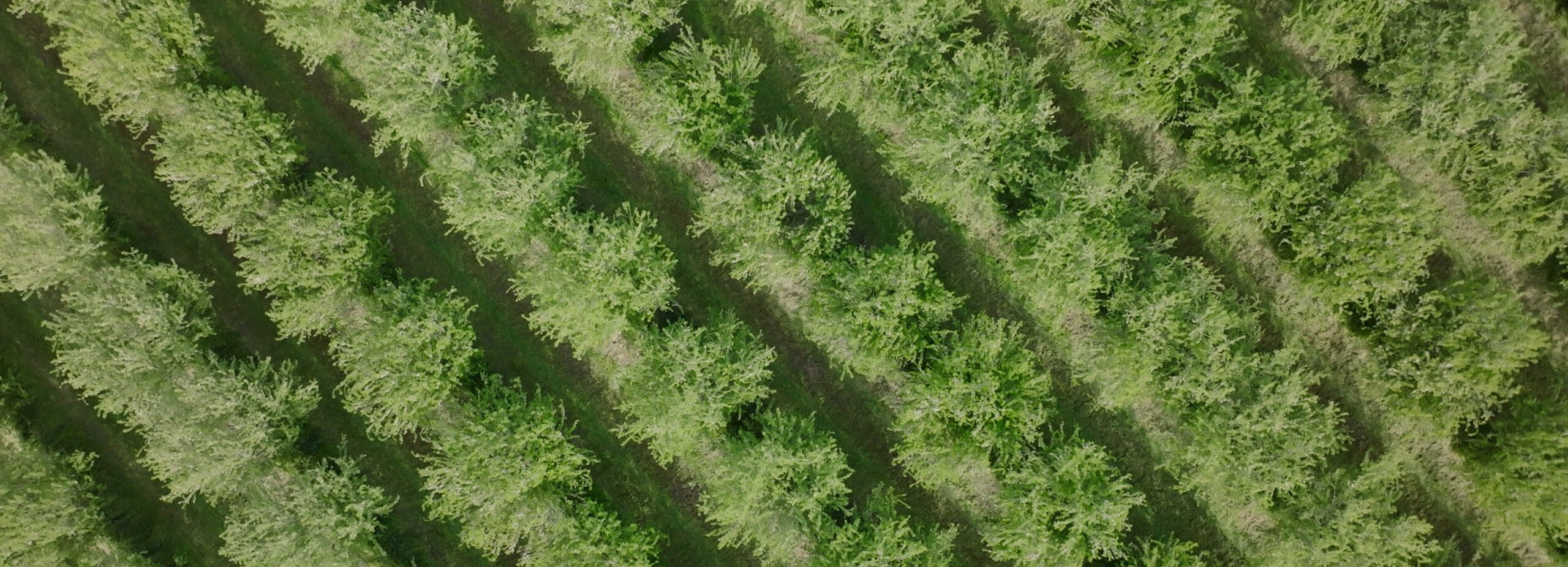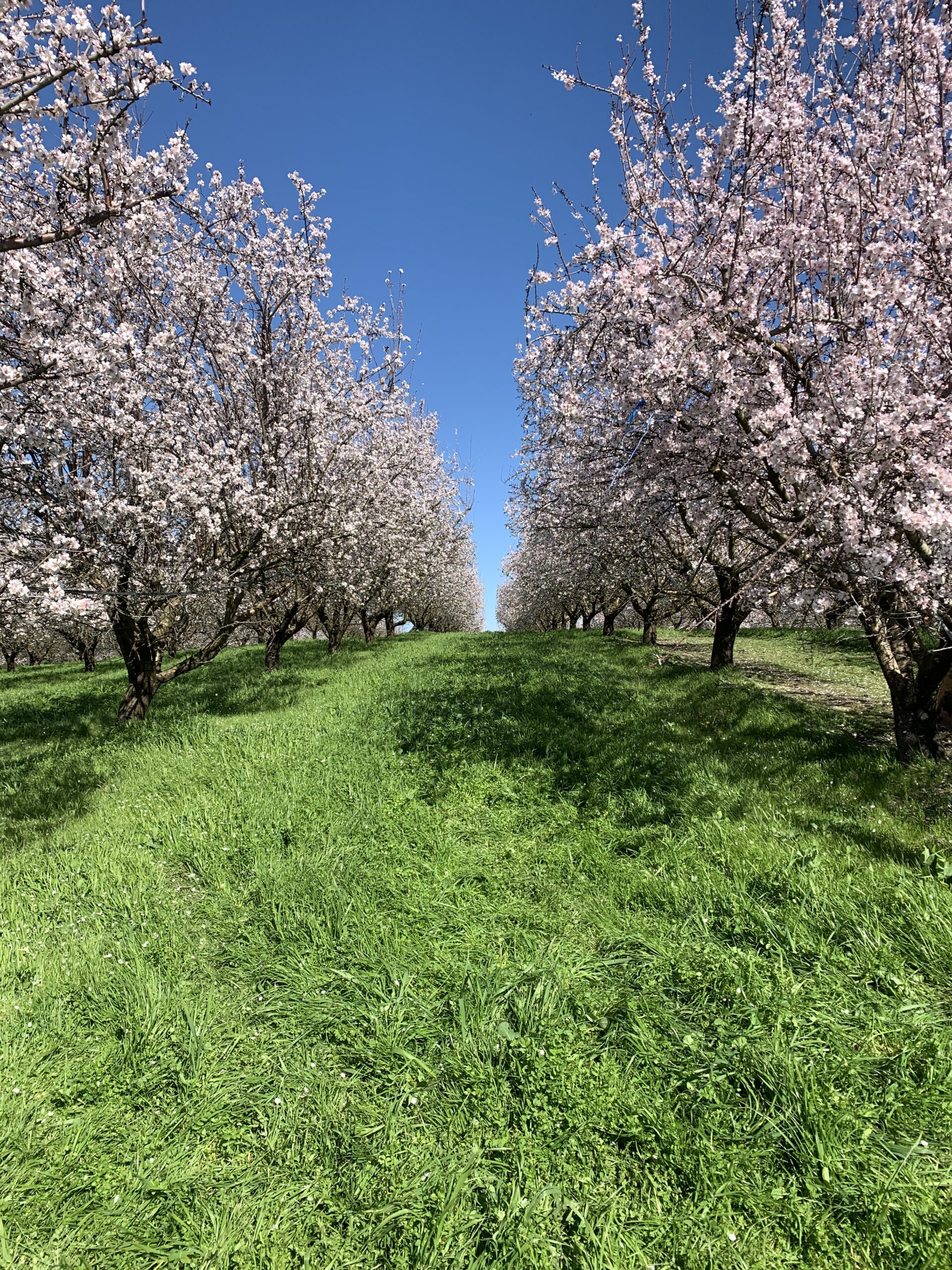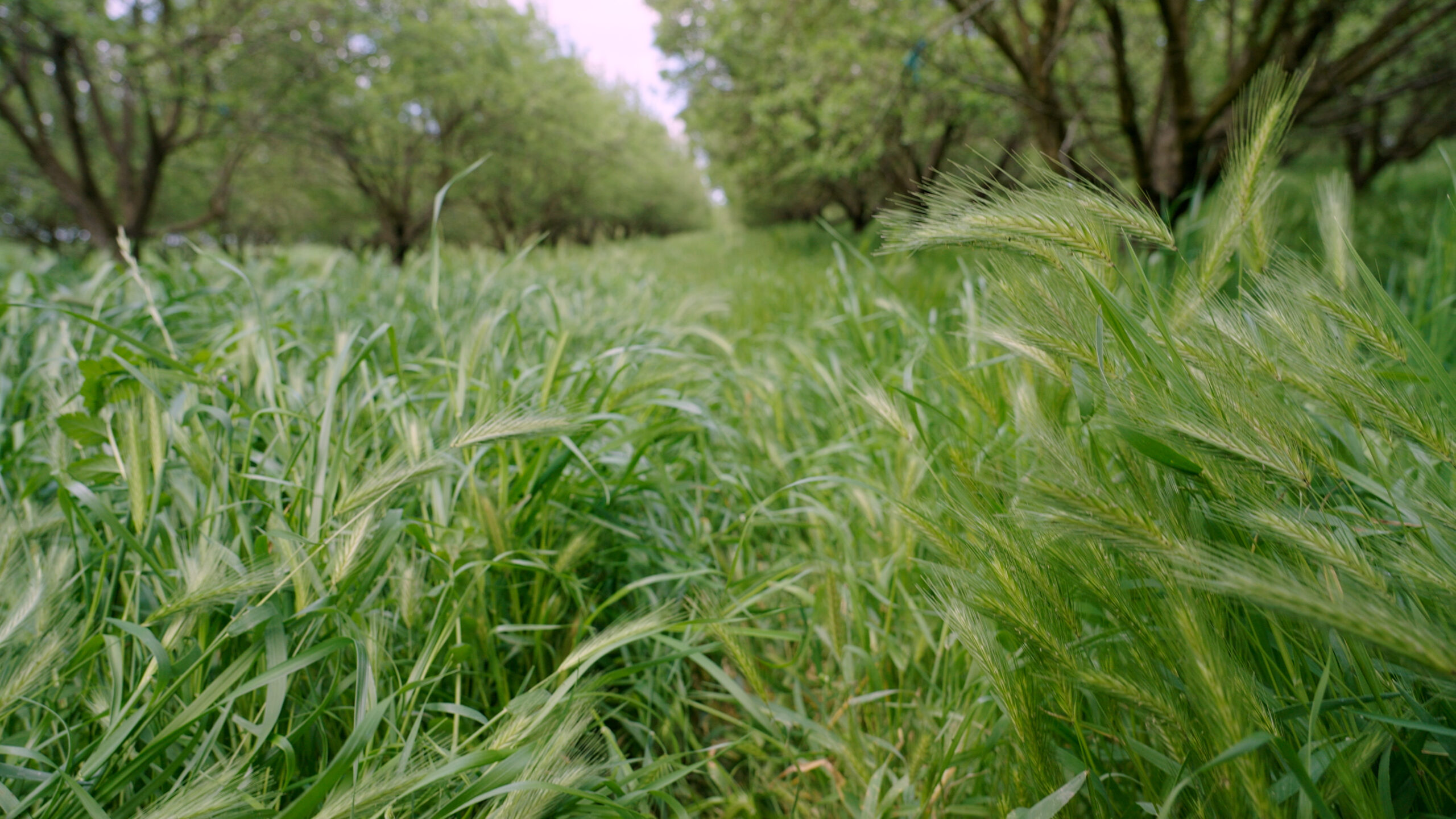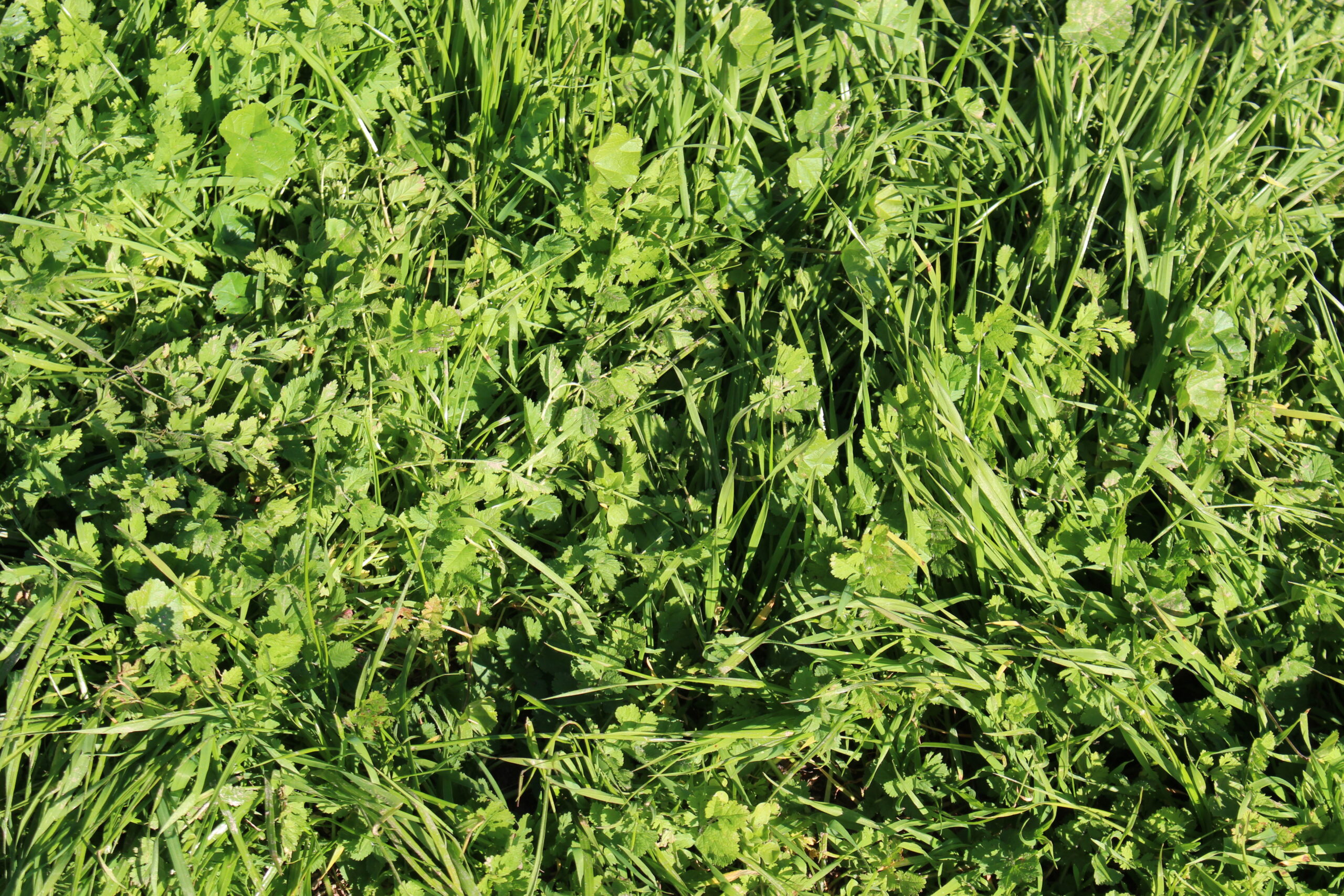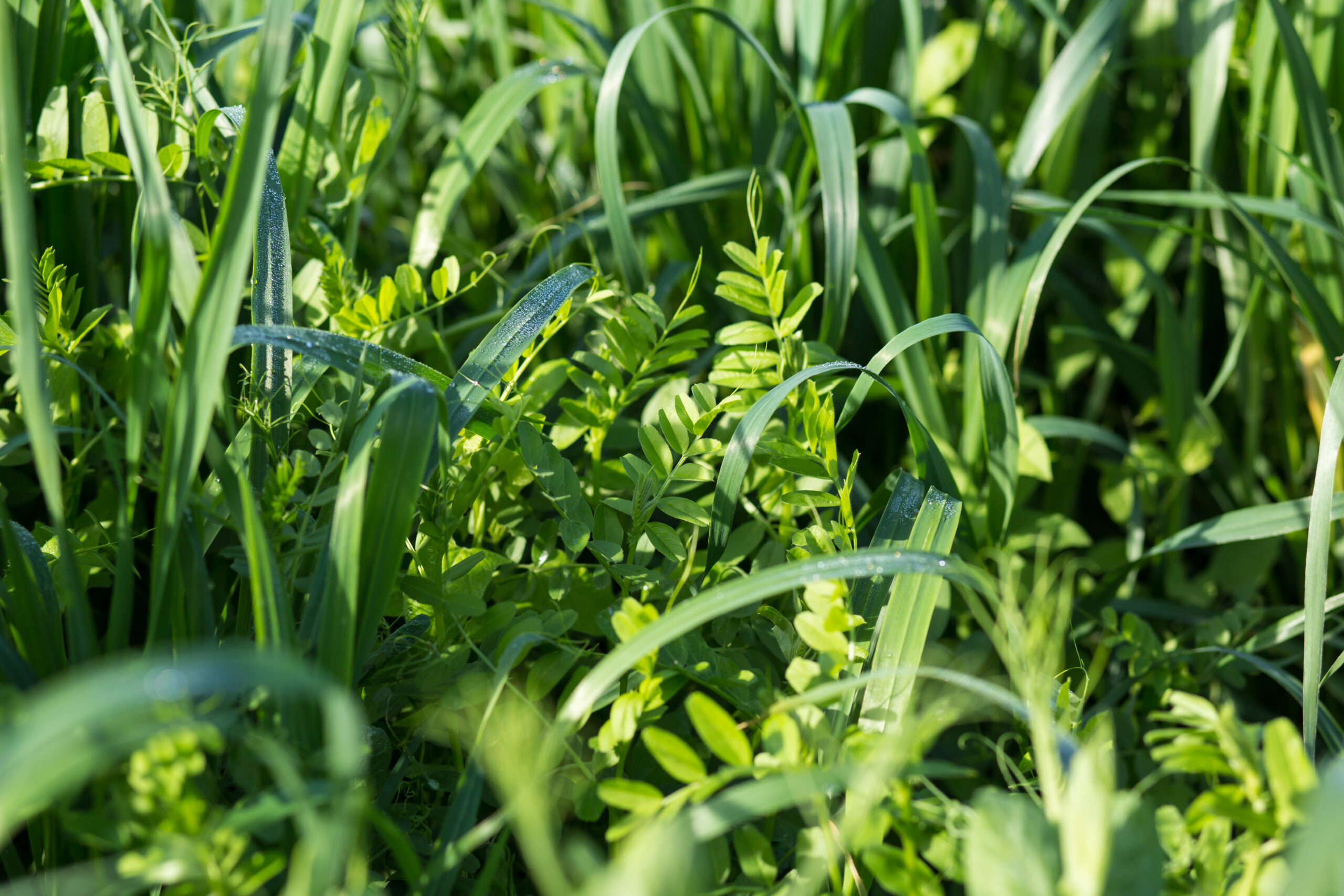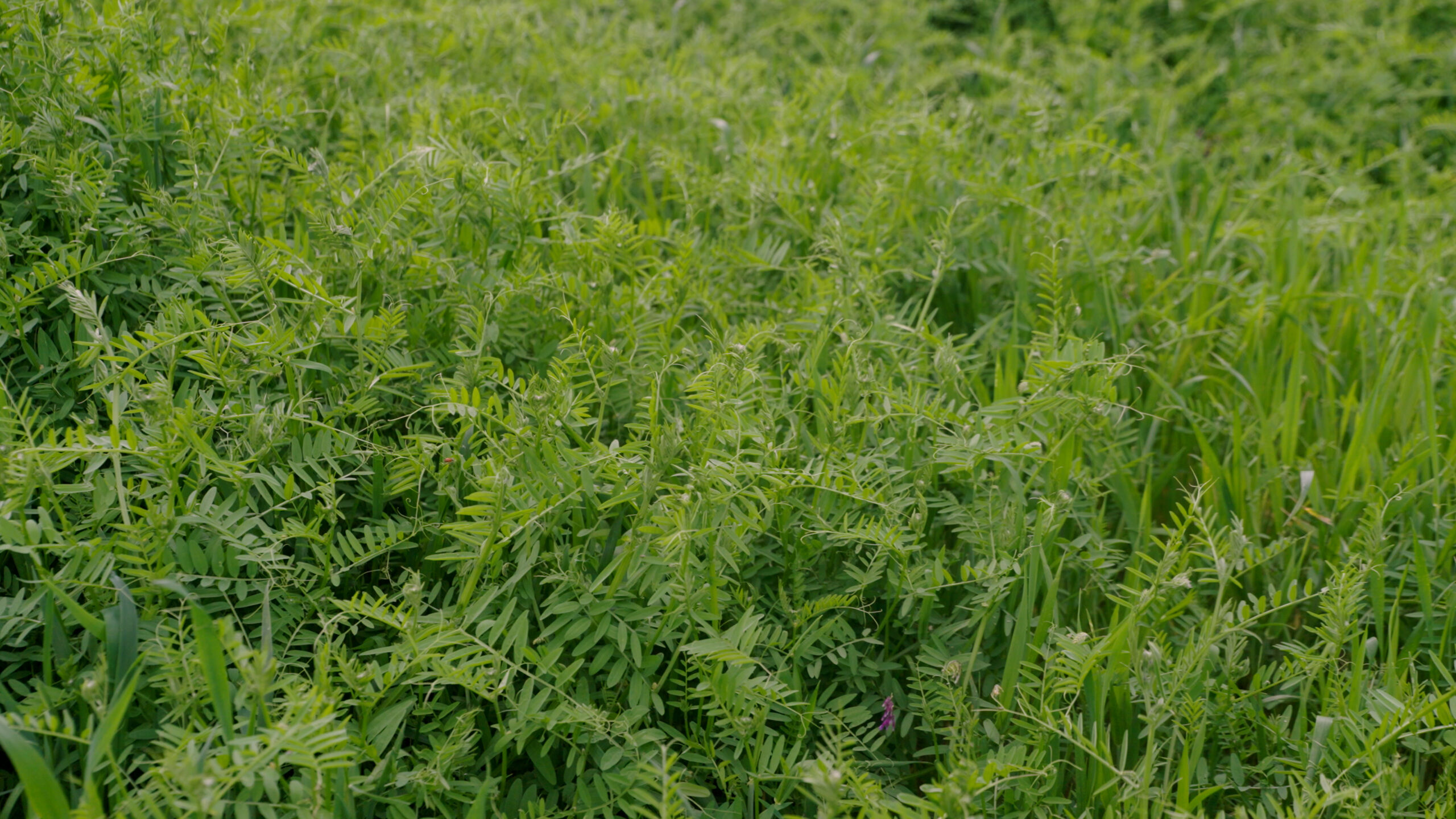
One of the tenets of Sustainable Conservation’s programs is the need for science to drive practical solutions. Over the past two years, our Solutions in Our Soil program has worked alongside growers, researchers, and water managers to gather and report the scientific consensus of the water and soil benefits associated with cover crops in California’s diverse agricultural contexts.
What are cover crops?
Cover crops are non-income-generating crops that protect and improve the soil between regular annual crop production or between rows of perennial tree and vine crops.
Cover crops are a known practice in California agriculture for reducing water runoff, increasing the amount of water that can infiltrate and stay in the soil, improving biodiversity, limiting groundwater pollution, and supporting better air quality, among other benefits. But under the Sustainable Groundwater Management Act (SGMA), concerns persist about whether cover crops “count against” growers’ limited water budgets and begs the question, is cover cropping worth the risk?
This spring, we co-released the Cover Cropping in Water-Scarce Environments: Grower Guidance to help farmers adapt this practice to changing water conditions. But the foundation for that guidance began a year earlier with the Cover Cropping in the SGMA Era publication, a collaborative 2024 report led by Sustainable Conservation that aggregated the most up-to-date research on cover crop water use and benefits. Most importantly, the report identified where gaps exist in recognizing their contributions to groundwater sustainability.
Now, one agency has put this science into action.
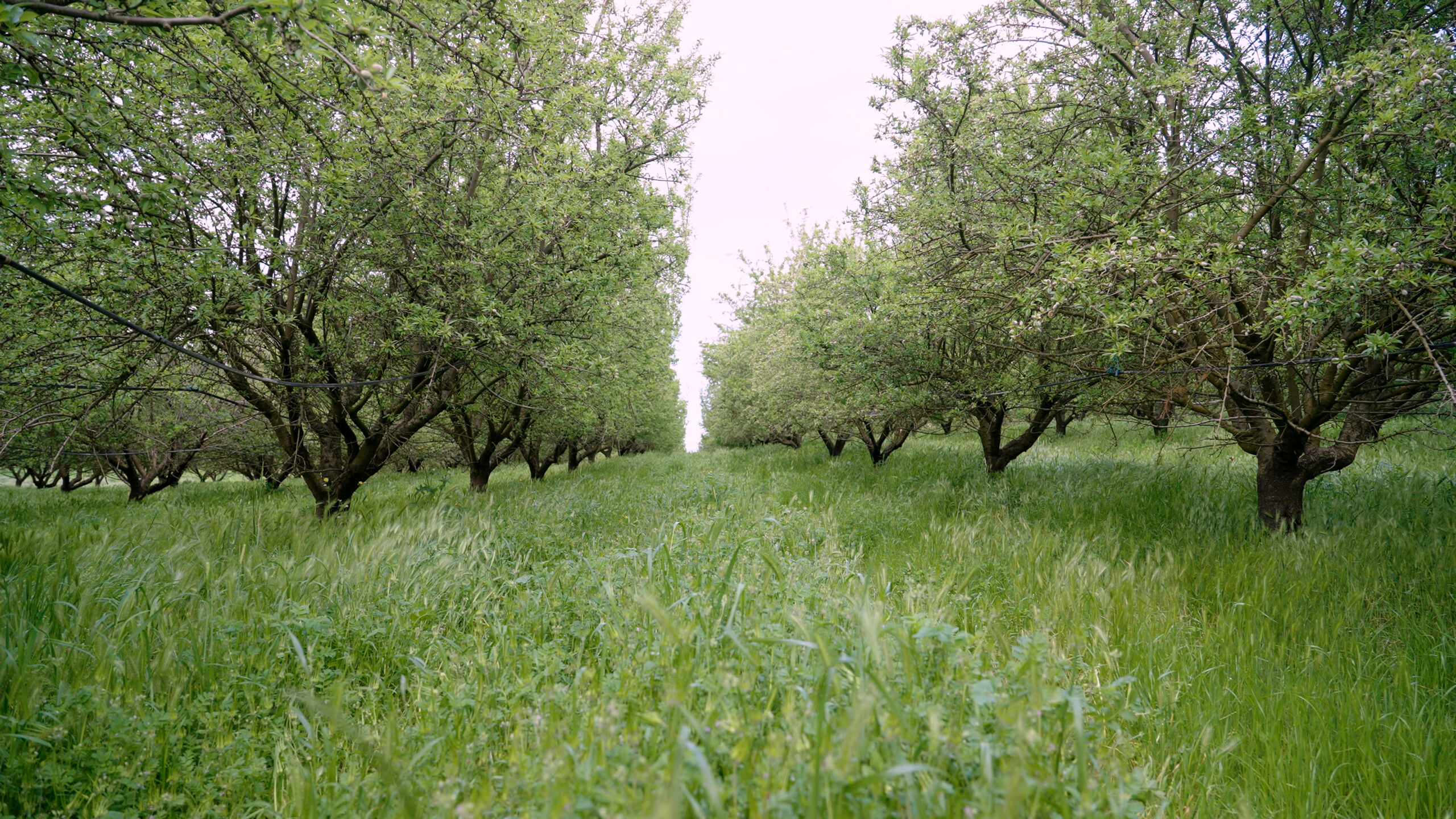
Photos of cover crops by Pusher HQ
Science-Informed Groundwater Credit
Under SGMA, California’s Groundwater Sustainability Agencies (GSAs) are responsible for managing groundwater use in their local groundwater subbasins. The East Turlock Subbasin GSA (ETSGSA) became one of the first GSAs in California to formally credit the water benefits of cover crops, based in part on the findings from the Cover Cropping in the SGMA Era report. This policy change sends a clear signal that sustainable agricultural practices like cover cropping have water benefits that can be recognized and rewarded within SGMA’s framework.
To calculate the groundwater consumption of crops, some GSAs like ETSGSA use remote sensing tools to estimate total crop water use and then subtract rainfall and surface water to arrive at estimated groundwater use.
But here’s the catch: if an agency doesn’t account for the way cover crops help rain soak into the soil and reduce runoff, those benefits can go unrecognized. To rectify this, ETSGSA makes an effective precipitation adjustment for growers who implement cover crops. Effective precipitation is the portion of rainfall that’s actually available for use by plants, as opposed to the portion of rainfall that runs off or percolates too deep into the soil. The higher the effective precipitation, the more rainfall is available for plant use. In real terms, this means less of the crop’s total water use is assumed to come from groundwater.
As presented in the report, cover crops both increase infiltration and reduce runoff by 40% or more. ETSGSA incorporated this science into their existing groundwater accounting systems to develop a simple credit: parcels with qualifying cover crops receive a 20% increase in effective precipitation. This reduces the amount of groundwater consumption attributed to this parcel — and gives growers water credit for the value their cover crops provide.
“Most of the data clearly point to the benefits of cover cropping as a ‘water-wise’ practice, so why would we wait to pursue it?” says Mike Tietze, ETSGSA General Manager. “We decided to start with a more modest credit so we could get an early start. We will be collecting data as we go and expect to refine our approach in the future as we learn more.”
Grower Perspectives
The practice has been met with widespread acceptance in ETSGSA, and some growers who were originally skeptical are now enthusiastic supporters of the cover cropping incentives the GSA is implementing.
Wes Sperry of Sperry Farms recently began cover cropping on some of his almond orchards and is now expanding its use on his farms. “The largest and most visually apparent change to an orchard cropping system is water infiltration rates drastically go up,” he explains. “During times of intense rainfall or even during lengthy irrigation sets, water run-off is minimized or even nonexistent when soil has a cover crop.” Sperry, a supporter of the credit, continues, “the benefits of using cover crops far outweigh the management challenges that come with establishing them.”
Benina Montes and Rosie Burroughs of Burroughs Family Farms have integrated cover cropping and other multi-benefit soil health and water-wise practices into their almond, walnut, and olive orchards for over 20 years and are also supporters of the credit. Montes has observed that cover crops “improve soil health by increasing organic matter, enhancing water infiltration, and supporting beneficial soil microbes,” thereby supporting on-farm water conservation. Burroughs echoes this sentiment, noting that cover cropping has “increased organic matter that has improved water holding capacity, allowing us to use less water.”
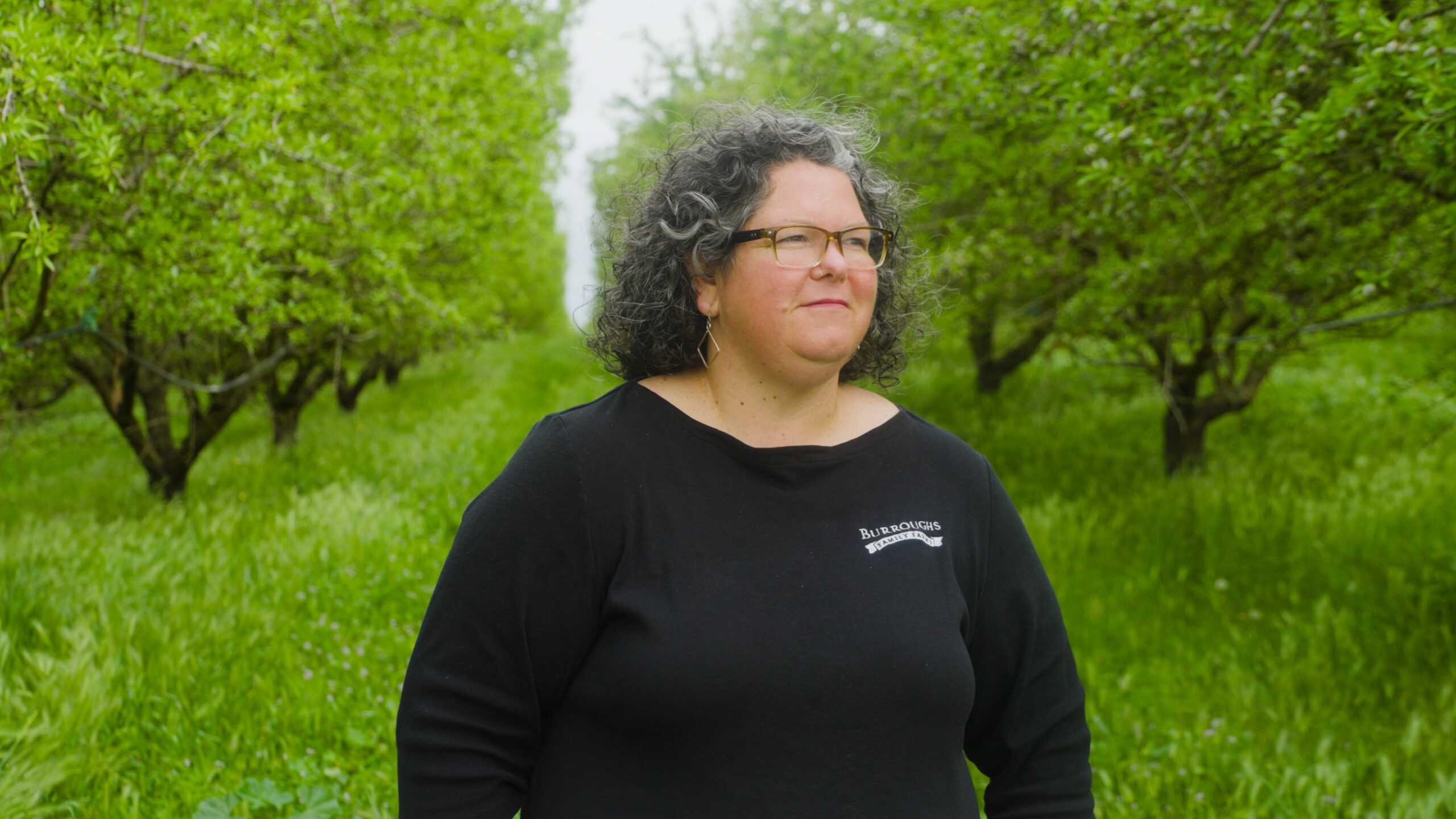
Benina Montes of Burroughs Family Farms on a cover-cropped orchard
Looking Ahead
ETSGSA’s 20% adjustment is a conservative starting point but also a meaningful step — it shows other GSAs one potential avenue to reward growers for sustainably stewarding their land and water resources. While each of the state’s subbasins are different, crediting the increased water-holding capacity of cover cropped soil is an adaptable lever that GSAs can use to harvest the full spectrum of soil health benefits that cover crops can present.
Drone footage of a Central Valley orchard with cover crops. Pusher HQ
We’re excited to continue working with ETSGSA and other GSAs across the state to elevate innovative models like this one. Incentives like this one not only reward growers for doing the right thing — they help shift systems toward practices that support long-term sustainability for agriculture, water, and communities. Crediting growers for implementing cover crops is a positive step towards realizing the Solution in Our Soils program vision: Healthier soil that benefits the crops that grow out of it, the water that flows through it, and the people that depend on it.
Visit suscon.org/covercrops to learn more about our cover crop research and recommendations, sign up for our Cover Cropping in the SGMA Era newsletter, or reach out to our team at soils@suscon.org.
